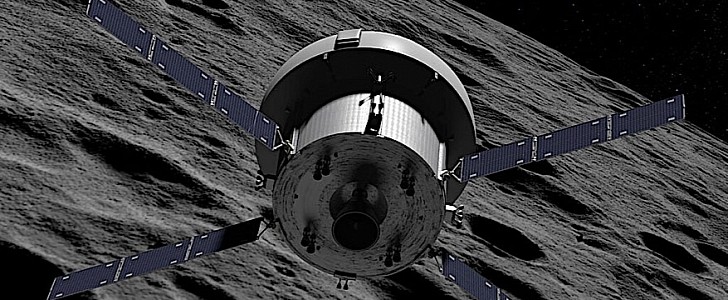The Apollo missions all had cameras on board to document the flight to the Moon and the activities of the astronauts there. But as the world is gearing up for humanity's second lunar exploration program, the focus is to make a hell of a spectacle of the whole thing.
As things stand now, the Artemis I mission is scheduled to take off In February 2022. It will be a dry run, carrying no humans (only a dummy astronaut called Campos will be on board) and meant to validate the systems of the Space Launch System rocket and the Orion capsule that will eventually take humans up there.
Artemis II is to follow sometime in 2023, this time with astronauts on board. The crew will not attempt a Moon landing, but will circle the celestial body and head back to Earth, validating life support systems and such.
It is this mission that will be thoroughly documented by lightweight audiovisual hardware supplied by one of the world’s favorite makers of incredible documentaries, National Geographic. The American space agency announced over the weekend it signed a non-reimbursable (no-exchange-of-funds) Space Act Agreement with National Geographic for this to happen.
The deal includes not only the yet unspecified hardware to fly on Artemis II, but also a coordinated effort from the company to use its entire might, meaning magazines, social and digital content, and television programming, to spread the Artemis message out there, so get ready for a flood of related content coming our way soon.
“Returning humans to the Moon with Artemis II will inspire the next generation of explorers,” said in a statement Kathy Lueders, associate administrator for the Space Operations Mission Directorate at NASA Headquarters in Washington.
“This time, we are bringing partners and technologies that will create additional opportunities for the world to share in the experience along with our astronauts.”
Artemis II is to follow sometime in 2023, this time with astronauts on board. The crew will not attempt a Moon landing, but will circle the celestial body and head back to Earth, validating life support systems and such.
It is this mission that will be thoroughly documented by lightweight audiovisual hardware supplied by one of the world’s favorite makers of incredible documentaries, National Geographic. The American space agency announced over the weekend it signed a non-reimbursable (no-exchange-of-funds) Space Act Agreement with National Geographic for this to happen.
The deal includes not only the yet unspecified hardware to fly on Artemis II, but also a coordinated effort from the company to use its entire might, meaning magazines, social and digital content, and television programming, to spread the Artemis message out there, so get ready for a flood of related content coming our way soon.
“Returning humans to the Moon with Artemis II will inspire the next generation of explorers,” said in a statement Kathy Lueders, associate administrator for the Space Operations Mission Directorate at NASA Headquarters in Washington.
“This time, we are bringing partners and technologies that will create additional opportunities for the world to share in the experience along with our astronauts.”

























